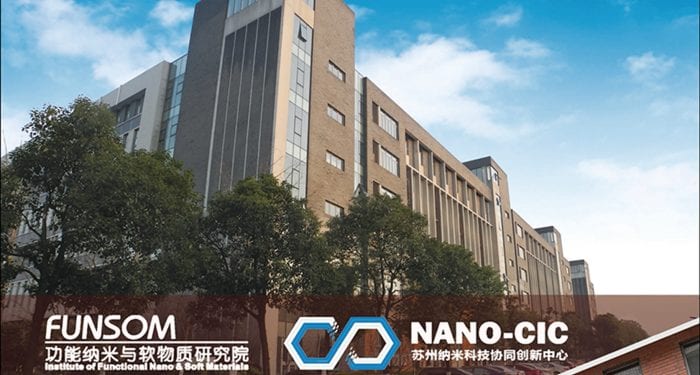China has the ambition not to be just big in nano, but also to be strong in nano. Researchers in Suzhou, China have taken a collaborative and multidisciplinary approach to this, and by pooling their resources and expertise are making impressive progress.
Now, Shuit-Tong Lee and Lifeng Chi have guest edited an issue of Advanced Materials, which provides an insight into the nanoscience research going on in and around Suzhou coordinated through NANO-CIC, one of the first 14 Collaborative Innovation Centers in China supported by the University Innovation Capacity Building Program (called the 2011 Program for short) administered by the State Ministry of Education. Several organizations are involved, including Soochow University, Suzhou Institute of Nano-tech and Nano-bionics of the Chinese Academy of Sciences, University of Science and Technology of China, Xi’an Jiaotong University, Southeast University, Suzhou Industrial Park, and the Jiangsu Innovation Strategic Alliance of the Nano-tech Industry.
The research activities in NANO-CIC are concentrated in five areas, namely nanofabrication, nanoenergy, optoelectronics, nanomedicine and nanobiology, and green environment. The Institute of Functional Nano & Soft Materials (FUNSOM) in Soochow University takes the leading position within NANO-CIC and its activities are strongly coupled with the overall research program.
The special issue contains articles covering these main research activities and the authors are from the institutions within NANO-CIC, reflecting the collaborative and multidisciplinary approach taken to developing nano-materials and nanofabrication in various applications.
In the field of nanofabrication, Prof. Jangxin Tang and Prof. Linsheng Chen give an overview of scalable nanopatterning technologies, Prof. Lin Jiang and Prof. Qiao Zhang summarize the synthesis of plasmonic nanoparticles and their self-assembly into well-defined structures, while Prof. Qiangbin Wang focuses on chiral plasmonic nanostructures. Prof. Lifeng Chi and Prof. Haiming Zhang describe low-dimensional organo–gold complexes used, for example, to produce graphene nanoribbons.
In optoelectronics, Prof. Liangsheng Liao et al. describe tandem organic light-emitting diodes (OLEDs), Prof. Jiansheng Jie and Prof. Xiaohong Zhang summarize recent advances in surface charge transfer doping (SCTD) of low-dimensional semiconductor nanostructures, Prof. Zhigang Zhao describes tungsten oxide materials and their applications in optoelectronics, while Prof. Qingwen Li reviews the preparation of carbon-nanotube (CNT) fibers and recently developed CNT-fiber-based, flexible, and functional devices.
In the field of environment, Prof. Shuhong Yu et al. describe advanced sorbents for oil-spill cleanup, as well as carbon materials and swellable oleophilic polymers. Prof. Jianmei Lu and her co-workers summarize the recent development of micro–nano adsorbents and photodegradation composites, which lead to effective water remediation.
In nanoenergy, Prof. Baoquan Sun, Prof. Mingwang Shao, and Prof. Shuitong Lee offer perspectives on nanostructured silicon and applications in flexible photovoltaics and thermoelectric generators, as well as piezoelectric devices for electricity generation. Prof. Wei Chen summarizes the recent progress on photoactuators based on photochemical and photothermal effects, and assembly strategies for the amplification of photoresponsive components. In the field of nanobiomedicine, Prof. Zhuang Liu discusses using albumins to build up nanoscale theranostics platforms and Prof. Yao He discusses silicon nanoparticles (SiNPs) and their applications in bioimaging and sensing.

















